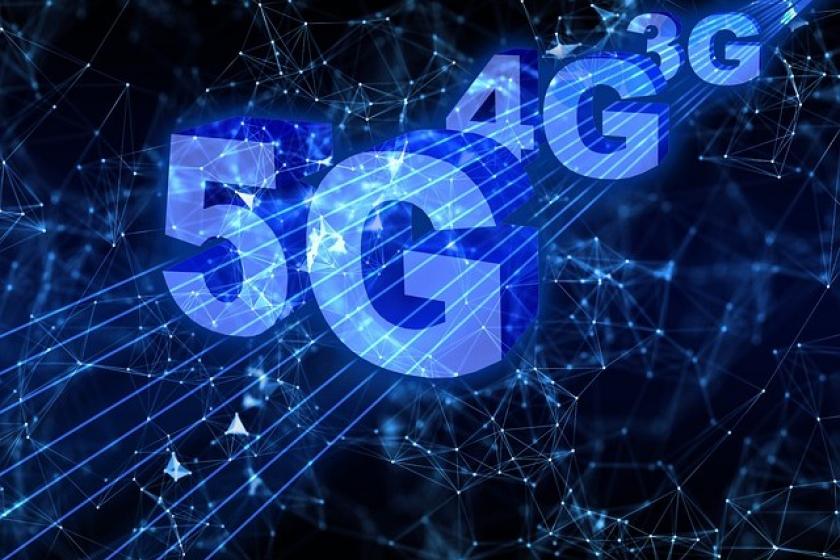New 5G Capabilities in 2020 will Shift Data Center Pivot PointsNew 5G Capabilities in 2020 will Shift Data Center Pivot Points
As 5G continues to roll out, it will enable new areas of innovation that lets us rethink the way large data center networks operate.
March 11, 2020

5G is the biggest technology topic of 2020. It promises fast, reliable, and near-instant communications that will universally connect people. The promised impacts of 5G will transform our society in ways we never imagined – from lightning-fast downloads and real-time high-definition video streaming to autonomous driving and the Industrial Internet of Things (IIoT). Those are just some of the emerging technologies that 5G will enable.
Mobile network operators are eager to deploy 5G and deliver new services to consumers. Around the world, operators have set ambitious targets for 5G mobile network deployments. By the middle of January 2020, more than 350 operators worldwide have invested in 5G network tests, trials, pilots, or actual deployments, according to the Global Mobile Suppliers Association (GSA). 5G, and the new services it enables, are about to put pressure on networks and data centers as they race to support unprecedented latency and bandwidth demands.
The ripple effects of 5G will disproportionately impact three areas that will be very influential over the next five years:
Automation in greenfield areas of manufacturing and transportation: IIoT applications will increase access requests, and mobile automotive IoT applications will stretch latency demands as both – formally disconnected environments – connect online with specific expectations. Mobile edge computing will become more important to process the increased access requests and meet stringent latency requirements.
IIoT is changing the way industries work by automating manufacturing and enabling intelligent, accessible environments. By embedding equipment with IoT sensors, manufacturing plants essentially become smart factories that monitor communications between several thousands of sensors. The 5G new radio (NR) release 15 specification focuses on enhanced mobile broadband (eMBB) and ultra-reliable, low-latency communications (URLLC) that enable IIoT applications.
Meanwhile, the vision of cellular vehicle-to-everything (C-V2X) based on 5G NR includes highly reliable communication for transportation with ultra-low latency, larger payloads, faster data rates, and greater positioning accuracy. 5G NR based C-V2X enables new features such as broadcasting of safety messages, advanced driving, extended sensing, and remote driving – the foundation required for autonomous vehicles.
Both IIoT and mobile automotive IoT applications have two things in common: (1) these functions were formally disconnected and now are implementing hundreds of connected, access-hungry sensors, and (2) they need extremely fast communications to be successful. Mobile edge computing will drive data center functionality to the edge of the network, closer to end-users, integrating computing, storage, and networking resources in base stations. Mobile edge computing, combined with 5G NR's air interface latency of <1 ms and planned support for one million devices per square kilometer, will create new infrastructure markets for increased access requests to meet the stringent latency requirements of IIoT and automotive IoT applications.
Every piece of data center infrastructure will get a speed upgrade: More users at higher data speeds will create demand for faster memory, faster data buses, and faster transceivers in the data center. Meeting the speed and flexibility demands will be one reason, but customer traceability through the network for application monetization will be the main driver to upgrade to the latest standard.
Increasing volumes of network traffic drive the need for higher speed networks – 400G today, and 800G is right behind it. But a speed increase in one area, like networking, has a ripple effect on everything around it. A faster network needs a faster communication bus – enter the need for PCIe Gen-5, which doubles the throughput of PCIe 4.0 to 32 gigatransfers per second (GT/s). Bus speed and bandwidth, in turn, drive the need for faster memory, like DDR5, that can store and send data at 6.0 GT/s. But faster is not the only dimension of growth. Not only will network capacity increase, but the ability to offer services that are highly differentiated will be crucial.
Data centers will evolve, allowing them to introduce new pricing models such as charge per transaction for ultra-low latency transfers. With billions of low latency connections such as autonomous cars, hundreds of billions of sensor-based transactions in the IoT, and terabits of bulk high-volume services, data centers can offer different pricing models, which creates competitive differentiation.
Design for Test will not be limited to ‘once-and-done’ testing: Software-defined networks, advanced malware detection, and evolving new formats of large and small format data transfers will make embedded testing during operation vital to ensure operation. Advanced design, test, and monitoring capabilities that ensure networks and products deliver the performance and failsafe reliability expected will be on the rise. New networks will require dynamic data intelligence and dynamic network intelligence to monitor operations.
The new surge of users enabled by 5G will require a series of technological advancements and a disruptive shift in operations-based test and measurement techniques. New 5G features, like URLLC and ultra-reliability, will place new demands on network operators to maintain real-time communications and service level agreements. Network virtualization and data center service level agreements (SLAs) supporting dynamic 5G data streams will open ecosystems for embedded testing of network edge computing resources. Along with these distributed data center designs is a need to instrument and monitor from network center to edge, as well as east-west transfers within the data center. Testing of new application protocols and the constant evolution of existing application message formats mixed with malware and attack traffic will no longer be a laboratory exercise.
As 5G continues to roll out, its market promise goes well beyond simply providing more connectivity and applications. It creates new areas of innovation that allows all of us to rethink the way large data center networks operate.
Read more about:
5GAbout the Author
You May Also Like


